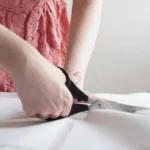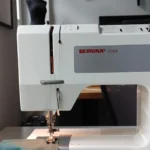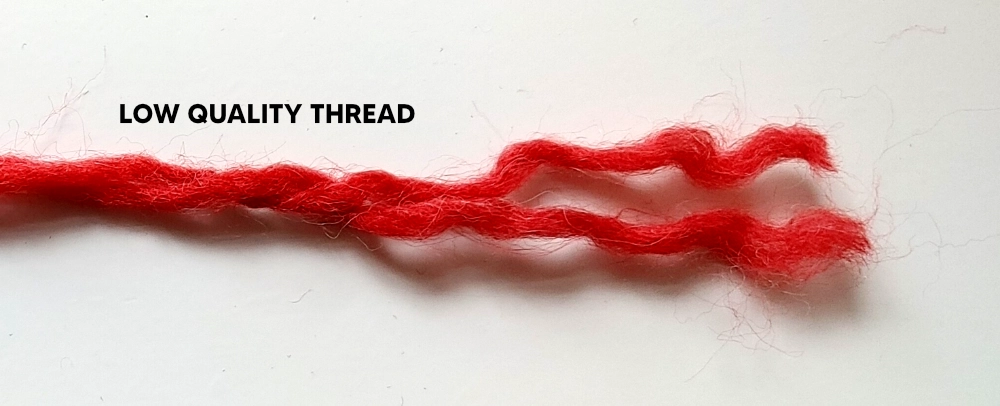
Where to find free pdf sewing patterns?
11/29/2024
Which is the best sewing machine for beginners?
11/29/2024Even after inserting a brand-new sewing machine needle, your thread keeps snapping as you sew? Then it might be the thread that's causing the problem. When I first started sewing, I didn’t realize that not all threads are the same, and I thought it didn’t matter which one I used. I was wrong. I had countless frustrating sewing sessions where the thread kept breaking, until I finally invested a bit more money into Gütermann sewing threads.
Why does my sewing thread keeps breaking?
There are multiple reasons for your thread to break it can be:
- Your sewing machine needle is too old
- The tension is too high
- The thread quality is low
How to test thread quality before use?
There are several factors that you can check the thread quality with:
- The Pull Test: Pull on the thread to check its strength. High-quality thread will not break easily with a firm pull.
- The Twirl Test: Take a length of thread and run it through your fingers. If it untwists or splits apart, it may be low-quality.
- Lint Test: Run the thread through your sewing machine and inspect the bobbin area after a few minutes of sewing. Excessive lint buildup is a sign of poor-quality thread.

This thread has poor quality because it untwists easily & has a lot of lint
Which thread materials are common and how do they differ?
30 years ago there was more cotton thread on the market. Nowadays thread is mostly made from polyester, but you can still find natural alternatives.
Cotton
Cotton is great for natural fibre fabrics, embroidery and quilting. Cotton has less stretch than polyester and hold seams firmly in place. High quality cotton, such as Egyptian cotton, has long staple fibres. Cotton thread should be smooth, doesn’t lose a lot of lint, is even in thickness and doesn’t break when high-speed sewing.
What to use cotton thread for: Natural fabrics, embroidery, quilting
Linen
Linen thread is great for hand sewing and very durable. If you would like to sew historically accurate garments or furniture it is a thread you should check out. The thread is less elastic, which is why I wouldn’t recommend sewing any garments that need a bit of elasticity in the seam. High quality linen thread shouldn’t fray and when it’s waxed it helps it to be smoother.
What to use linen thread for: Historically accurate garments, leather work, upholstery
Silk
Often used for delicate fabrics, silk thread is smooth, luxurious, and ideal for hand stitching or high-end fabrics. Silk has a high strength but it also elastic, which makes it perfect for dessous and high couture projects. High quality silk should be consistent in diameter without any fraying.
What to use silk thread for: Underwear, high couture projects, buttonholes, bias-cut projects with need for elasticity
Polyester
Polyester is versatile, it works well on most fabrics and is especially good for garments due to its elasticity. Compared to cotton, polyester is more elastic, which is helpful for sewing athletic wear that must withstand heavy use. Polyester also resists moisture and UV rays.
What to use polyester thread for: most sewing projects, sportswear, outdoor projects
Rayon
Rayon is very shiny, smooth and has vibrant colours and is often used in embroidery and decorative stitching. Rayon is made from cellulose fibres but despite its natural origins, rayon undergoes significant chemical processing which isn’t very environmentally friendly.
What to use rayon thread for: embroidery and decorative stitching
Nylon
Nylon is incredibly strong, durable and slightly elastic. Besides swimwear, it is often used for heavy duty projects like leather, sails or tarpaulin. Nylon is resistant to abrasion, mildew, and UV rays. Its smooth texture allows it to glide through thick or tough fabrics without fraying or breaking.
What to use nylon thread for: Outdoor gear, upholstery, and heavy fabrics
Basics about thread construction
Every spun thread starts its journey as a fibre of certain length which then is spun into yarn. Yarn is twisted into ply, which is than twisted into a cord.
There are different thicknesses of thread (measured in tex) which consist of 2, 3 or 4 ply threads which form 4, 6 or 9 cord threads.

Apart from spun threads, there are filament threads which are long thin strands of polyester/silk fibre which leave a very low amount of lint. Stronger than filament threads are core spun threads that have cotton/polyester spun around a polyester-filament core. Another version of filament is monofilament which is used for fishing lines and jewellery cord.
Different thread finishes
There are 7 common methods of finishing threads some are more environmentally friendly than others. Personally I like a soft finish more because it is more environmental friendly.
Mercerized finish:
The mercerized finish is primarily used for cotton thread. The thread is soaked in a solution then neutralized and stretched under tension. This process lets the fibers swell, resulting in a smooth and shiny thread
Benefits: Increased strength, a smoother surface, better dye uptake (resulting in richer colours), and enhanced durability.
Eco-Friendliness: Traditional mercerization involves chemical processes that can be harmful if the chemicals are not properly managed. However, some manufacturers now use eco-friendly methods to reduce the environmental impact.
Glazed finish:
Glazing is mostly used on cotton threads, that will be coated with wax or starch and afterwards being polished, creating a shiny smooth surface.
Benefits: Increased resistance to abrasion and tangling, making the thread suitable for hand quilting or projects where friction is high.
Eco-Friendliness: Glazed finishes typically use wax or starch, which are relatively natural substances. However, the process itself can sometimes involve synthetic chemicals that might be less environmentally friendly.
Bonded finish:
A bonded finish is often used with synthetic threads (nylon, polyester) where the thread is coated with a resin or polymer to bind fibers together.
Benefits: Increases the strength, abrasion resistance, and resistance to fraying, which is particularly useful for heavy-duty applications like upholstery or outdoor gear.
Eco-Friendliness: Bonding agents can be synthetic, and these processes may involve chemicals that are harmful to the environment. Also, synthetic threads like nylon or polyester are petroleum-based and less eco-friendly.
Soft finish:
The soft finish is one of the least harmful procedures and used for cotton and synthetic threads. The threads get minimally processed or treated, leaving them free from heavy coatings. This makes them softer and more flexible.
Benefits: Perfect for general sewing and quilting, as the thread remains soft and pliable with minimal chemical treatment.
Eco-Friendliness: Soft-finished threads are among the most eco-friendly because they require fewer chemicals and treatments during manufacturing.
Waterproof or water-Repellent finish:
Waterproof and water repellent finishes are used on synthetic thread for outdoor and industry usage. Threads are coated in silicone or another synthetic solution.
Benefits: Repels water, making the thread ideal for outdoor gear, tents, awnings, or anything exposed to the elements.
Eco-Friendliness: These finishes usually involve synthetic chemicals, which may not break down easily in the environment. The overall eco-friendliness depends on the specific chemical used and the disposal process.
UV-resistant finish
The UV-resistant finish is used with synthetic threads where a special coating is applied that prodtects the thread from sunlight.
Benefits: Ideal for outdoor applications where exposure to sunlight could cause the thread to degrade or weaken over time.
Eco-Friendliness: Like waterproof finishes, the chemicals used for UV resistance are often synthetic and may not be environmentally friendly.
Laminated finish
A laminate or coating is applied to provide extra durability on synthetic threads, like water resistance or heat resistance.
Benefits: Adds significant strength and durability, making it suitable for high-performance industrial or technical applications.
Eco-Friendliness: Laminated threads are typically not eco-friendly due to the synthetic chemicals used in the coating.
What the best thread to buy for my sewing project?
In general threads are like shoes and you can buy one for every occasion or invest in a good allrounder. Branded threads are always a good investment because they have a certain level of quality that you can trust on.
Here are some examples of sewing threads and their usage but I recommend looking at each producer’s website for a more detailed description.
|
Brand |
Thread Line |
Material |
Best For |
Key Features |
|
Gütermann |
Sew-All |
100% Polyester |
General sewing, garments, and quilting |
All-purpose, strong, and smooth; suitable for most fabrics and machine types. |
|
Cotton 100% |
100% Cotton |
Quilting, garments, natural fabrics |
Natural fiber, soft and smooth; ideal for quilting and natural fabrics like cotton. |
|
|
Top Stitch |
100% Polyester |
Decorative stitching, denim, buttonholes |
Strong, thick thread for visible stitches; provides bold, durable seams. |
|
|
Extra Strong |
100% Polyester |
Heavy fabrics, upholstery, outdoor gear |
High tensile strength for tough fabrics like leather, canvas, and denim. |
|
|
rPET (Recycled) |
100% Recycled Polyester |
Eco-friendly projects, general sewing |
Made from recycled plastic bottles; eco-conscious option with strong performance. |
|
|
Mettler |
Poly Sheen |
100% Polyester |
Embroidery, decorative stitching |
High sheen polyester thread; resistant to wear and suitable for detailed embroidery. |
|
Silk-Finish Cotton |
100% Cotton |
Quilting, garments, and natural fabrics |
Luxurious cotton with a soft, silky finish; ideal for natural fabrics and quilting. |
|
|
Seralon |
100% Polyester |
General sewing, garments |
All-purpose, smooth and strong; works well on most fabrics. |
|
|
Metrosene |
100% Polyester |
Fine stitching, garments, and home decor |
Versatile and durable, used for lightweight and delicate fabrics. |
|
|
Amann |
Saba |
Polyester-core, covered |
General sewing, garment construction, and upholstery |
Core-spun polyester thread, durable and versatile for heavy-duty fabrics. |
|
Rasant |
Polyester-core, cotton-wrapped |
Garments, quilting, and home decor |
Combines polyester strength with a soft cotton finish; ideal for sewing and quilting. |
|
|
Serafil |
Continuous Filament Polyester |
Upholstery, leather, accessories and technical textiles |
Strong, smooth filament thread for industrial and tough sewing applications. |
|
|
Isacord |
100% Polyester |
Embroidery |
High-quality embroidery thread; durable with a smooth, shiny finish. |
|
|
Sulky |
Sulky Rayon |
100% Rayon |
Embroidery and decorative stitching |
High-sheen rayon thread, perfect for machine embroidery and decorative designs. |
|
Sulky Cotton |
100% Cotton |
Quilting, applique, and embroidery |
Smooth cotton thread for detailed quilting and applique work. |
|
|
Sulky Poly Deco |
100% Polyester |
Decorative stitching and embroidery |
Strong, vibrant polyester thread; ideal for bold embroidery designs. |
|
|
Sulky Blendables |
100% Cotton |
Quilting, embroidery, and decorative stitching |
Multicolored cotton thread that creates a variegated effect in quilting and stitching. |
|
|
Coats |
Dual Duty XP |
Polyester-core, cotton-wrapped |
General sewing, garments, and quilting |
Strong, all-purpose thread; good for both machine and hand sewing. |
|
Coats & Clark Cotton |
100% Cotton |
Quilting, embroidery, and garment construction |
Soft and natural cotton thread, popular for quilting and sewing natural fabrics. |
|
|
Coats Extra Strong |
100% Polyester |
Heavy-duty fabrics, upholstery, outdoor gear |
High tensile strength for durable stitching on tough materials. |
|
|
Coats Moon |
100% Polyester |
General sewing and overlocking |
Affordable polyester thread, ideal for basic sewing and overlocking/serging. |
